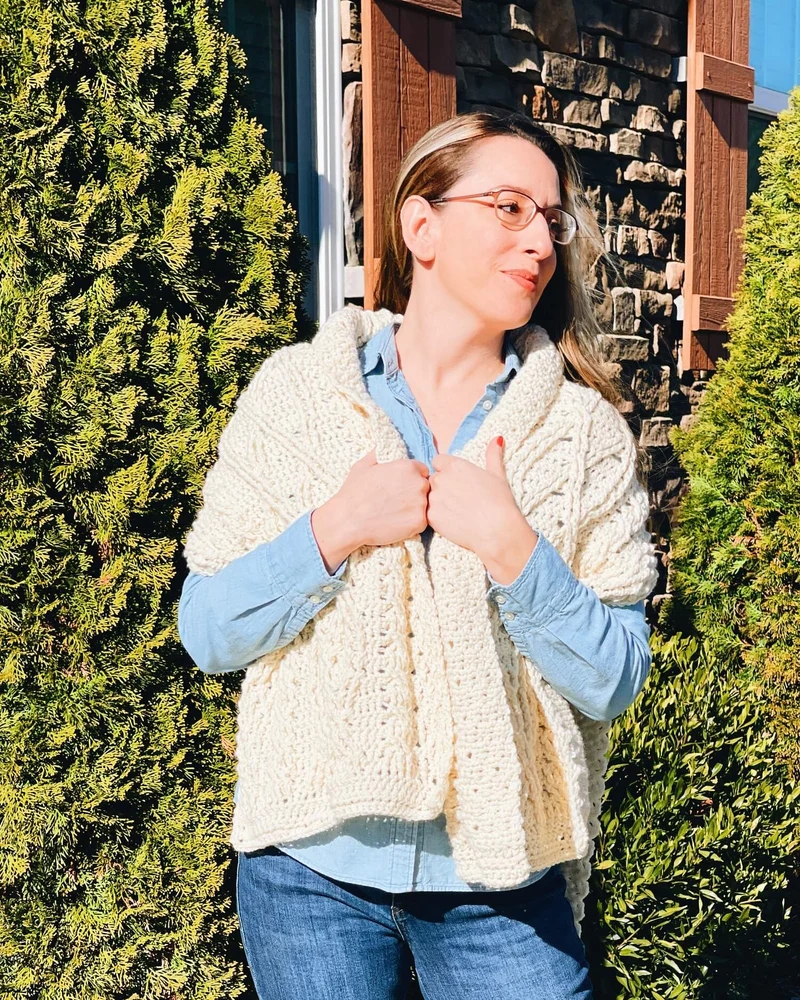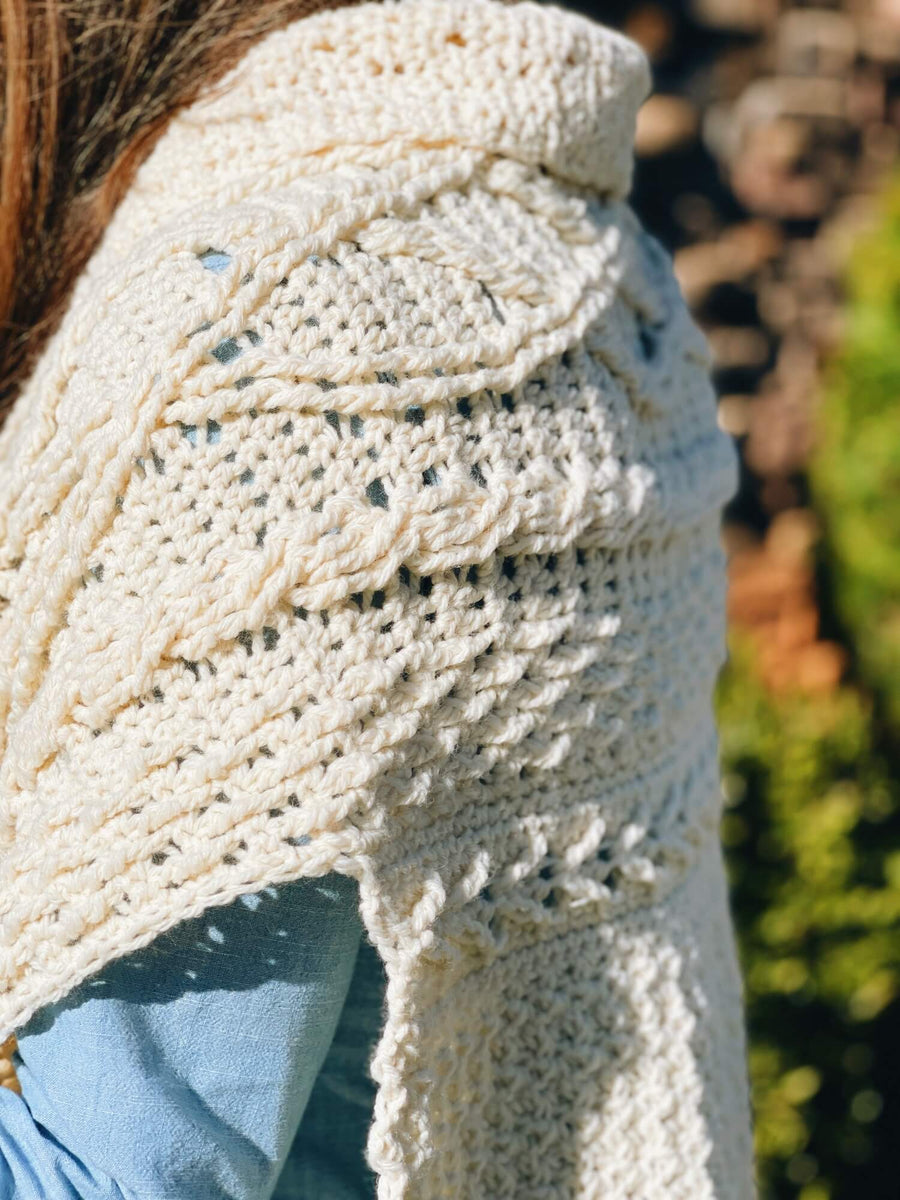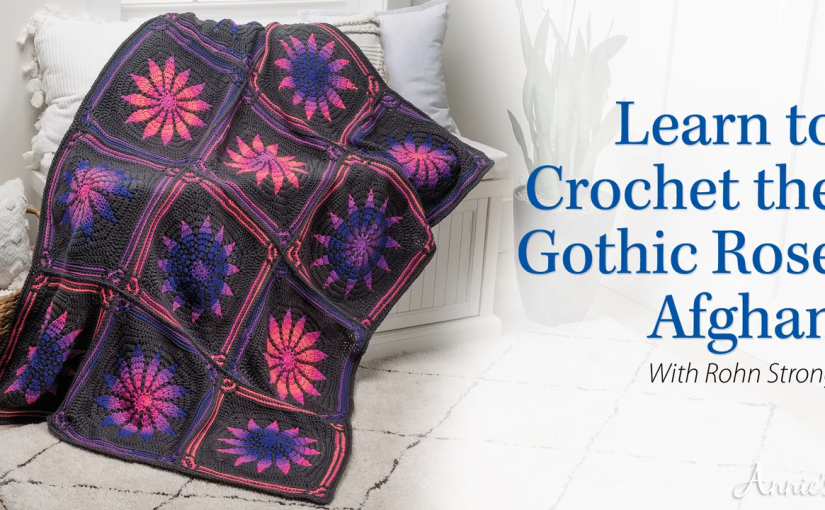Get ready to cozy up because this project is sure to be one of your new favorites! The Pando Sweater Shawl is both stunning and surprisingly simple to crochet. Its cabled details add a unique touch, while the clever construction makes it flattering on everyone, regardless of body shape. Let’s get hooked!

About the Pattern
The Pando Sweater Shawl starts with a scarf section, then expands outward to form the wings of the shawl. This lets you customize the back length while creating a dramatic and stylish silhouette. Intrigued? Let’s dig into the materials and first section of this pattern! You can purchase the final pattern HERE or grab the kit (which includes the pattern and the yarn) HERE.
Materials
- Yarn: Wool Ease (80% Acrylic/20% Wool;3oz/85g;197yd/180m) 6 (7, 8) skeins in Fisherman
- Hook: US K/6.5mm Crochet Hook
- Notions: Tapestry Needle, Scissors
Gauge
12 sts and 9.75 rows = 4 inches in HDC
Finished Sizes
Short/1 (Medium/2, Long/3)
A – Front Length: 62 (73, 84) inches
B – Front Width: 13 inches
C – Back Length: 17.5 inches or desired length
D – Back Width: 20 (24, 28) inches

Pattern Notes
- Front post triple crochet (fptr): YO twice, insert hook from front to back around post of sc two rows below next sc, YO and pull up a loop, [YO and draw through 2 loops on hook] 3 times.
- Ch-2 counts as first hdc throughout
- Cable Twist:
- Skip the first 2 fptr.
- Work fptr around the posts of the next 2 sts.
- Going back, work fptr in front and behind the last 2 sts you worked.
Scarf Section 1
- Ch 47
- Row 1: Dc in 5th ch from hook and in each ch across. (44 dc)
- Row 2 and all even rows (WS): Ch 1, turn, sc in each st across.
- Row 3 (RS): Ch 2, turn, (fptr in next st, hdc in next st) three times, hdc in next st, fptr in next 4 sts, hdc in next 2 sts, fptr in next 2 sts, hdc in next 4 sts, fptr in next 4 sts, hdc in next 4 sts, fptr in next 2 sts, hdc in next 2 sts, fptr in next 4 sts, hdc in next 2 sts, (fptr in next st, hdc in next st) three times.
- Row 5: Ch 2, turn, hdc in next st (fptr in next st, hdc in next st ) twice, hdc in next 2 sts, cable twist, hdc in next 4 sts, [fptr in 2 fptr on previous RS row, fptr around post of next 2 fptr to the left of your current place, sk 4 sc, hdc in next 4 sts] twice, cable twist, hdc in next 3 sts, (fptr in next st, hdc in next st) twice, hdc in last st.
- Row 7: Ch 2, turn, (fptr in next st, hdc in next st) three times, hdc in next st, (fptr in next 4 sts, hdc in next 4 sts) four times, ending last rep with a hdc in next 2 sts, (fptr in next st, hdc in next st) three times
- Row 9: Ch 2, turn, hdc in next st (fptr in next st, hdc in next st ) twice, hdc in next 2 sts, (cable twist, hdc in next 4 sts) four times, ending last rep with a hdc in next 3 sts, (fptr in next st, hdc in next st) twice, hdc in last st.
Join Me for the Crochet Along!
I’ll post the next section of the pattern next week. In the meantime, need some extra guidance? I’ve got a crochet tutorial just for you on my YouTube channel (www.youtube.com/rohnstrong). Show me your progress by sharing photos using the hashtag #PandoSweaterShawlCAL on social media. Let’s get those hooks moving!










